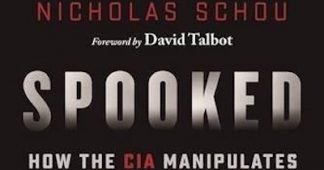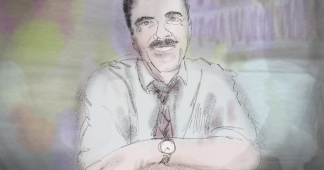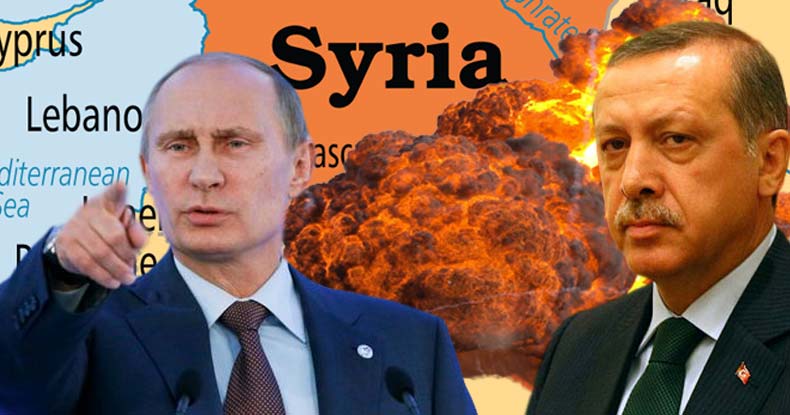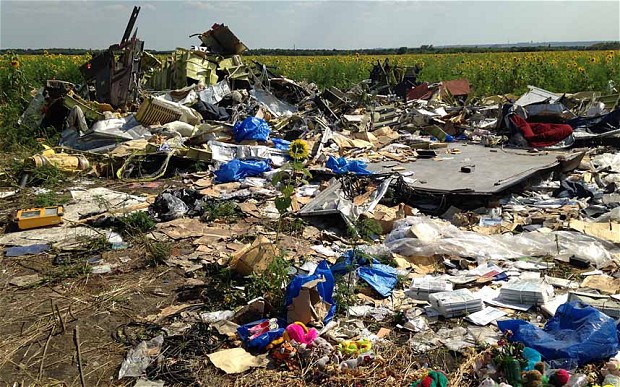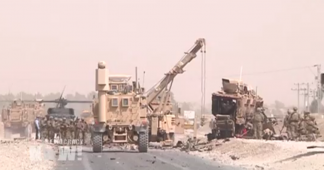Robert Parry, editor and publisher of Consortiumnews.com, passed away on January 27th.
The Global Research team pays tribute to Robert Parry and his unwavering commitment to independent and honest journalism. His legacy will live.
Robert Parry was a powerful voice, incisive in his analysis of complex foreign policy issues, with a longstanding commitment to peace and social justice.
To consult The Robert Parry Archive of articles posted on GR, click here.
Below is Robert Parry’s incisive and timely April 2013 article on Hollywood’s slanted interpretation of the Soviet Afghan war. The US supported “Freedom Fighters” were Al Qaeda. The Afghan Mujahideen were jihadist mercenaries recruited by the CIA. It was all for a good cause: destabilize a progressive secular government, occupy and destroy Afghanistan, undermine the Soviet Union.
“Reagan’s pet “freedom fighters” in Afghanistan as in Nicaragua were tainted by the drug trade as well as by well-documented cases of torture, rape and murder.”
Robert Parry’s Legacy is Truth in Media!
At this juncture in our history during which independent media is threatened, Robert Parry lives in our hearts and minds.
Michel Chossudovsky, January 29, 2018
**
A newly discovered document undercuts a key storyline of the anti-Soviet Afghan war of the 1980s – that it was “Charlie Wilson’s War.” A note inside Ronald Reagan’s White House targeted the Texas Democrat as someone “to bring into circle as discrete Hill connection,” Robert Parry reports.
Official Washington’s conventional wisdom about Afghanistan derives to a dangerous degree from a Hollywood movie, “Charlie Wilson’s War,” which depicted the anti-Soviet war of the 1980s as a fight pitting good “freedom fighters” vs. evil “occupiers” and which blamed Afghanistan’s later descent into chaos on feckless U.S. politicians quitting as soon as Soviet troops left in 1989.
The Tom Hanks movie also pushed the theme that the war was really the pet project of a maverick Democratic congressman from Texas, Charlie Wilson, who fell in love with the Afghan mujahedeen after falling in love with a glamorous Texas oil woman, Joanne Herring, who was committed to their anti-communist cause.
However, “Charlie Wilson’s War” – like many Hollywood films – took extraordinary license with the facts, presenting many of the war’s core elements incorrectly. That in itself might not be a serious problem, except that key U.S. policymakers have cited these mythical “facts” as lessons to guide the current U.S. military occupation of Afghanistan.
The degree to which Ronald Reagan’s White House saw Wilson as more puppet than puppet-master is underscored by a newly discovered document at Reagan’s presidential library in Simi Valley, California. I found the document in the files of former CIA propaganda chief Walter Raymond Jr., who in the 1980s oversaw the selling of U.S. interventions in Central America and Afghanistan from his office at the National Security Council.
The handwritten note to Raymond appears to be initialed by then-National Security Adviser Robert McFarlane and instructs Raymond to recruit Wilson into the Reagan administration’s effort to drum up more Afghan war money for the fiscal 1985 budget. The note reads:
“Walt, Go see Charlie Wilson (D-TX). Seek to bring him into circle as discrete Hill connection. He can be very helpful in getting money. M.” (The notation may have used the wrong adjective, possibly intending ”discreet,” meaning circumspect and suggesting a secretive role, not “discrete,” meaning separate and distinct.)
Raymond appears to have followed up those instructions, as Wilson began to play a bigger and bigger role in unleashing the great Afghan spending spree of 1985 and as Raymond asserted himself behind the scenes on how the war should be sold to the American people.
Raymond, a 30-year veteran of CIA clandestine services, was a slight, soft-spoken New Yorker who reminded some of a character from a John le Carre spy novel, an intelligence officer who “easily fades into the woodwork,” according to one Raymond acquaintance. But his CIA career took a dramatic turn in 1982 when he was reassigned to the NSC.
At the time, the White House saw a need to step up its domestic propaganda operations in support of President Reagan’s desire to intervene more aggressively in Central America and Afghanistan. The American people – still stung by the agony of the Vietnam War – were not eager to engage in more foreign adventures.
So, Reagan’s team took aim at “kicking the Vietnam Syndrome” mostly by wildly exaggerating the Soviet threat. It became crucial to convince Americans that the Soviets were on the rise and on the march, though in reality the Soviets were on the decline and eager for accommodations with the West.
Yet, as deputy assistant secretary to the Air Force, J. Michael Kelly, put it, “the most critical special operations mission we have … is to persuade the American people that the communists are out to get us.”
The main focus of the administration’s domestic propaganda was on Central America where Reagan was arming right-wing military juntas engaged in anti-leftist extermination campaigns. Through the CIA, Reagan also was organizing a drug-tainted terrorist operation known as the Contras to overthrow Nicaragua’s leftist Sandinista government.
To hide the ugly realities and to overcome popular opposition to the policies, Reagan granted CIA Director William Casey extraordinary leeway to engage in CIA-style propaganda and disinformation aimed at the American people, the sort of project normally reserved for hostile countries. To oversee the operation – while skirting legal bans on the CIA operating domestically – Casey moved Raymond from the CIA to the NSC staff.
Raymond formally resigned from the CIA in April 1983 so, he said, “there would be no question whatsoever of any contamination of this.” But from the beginning, Raymond fretted about the legality of Casey’s involvement. Raymond confided in one memo that it was important “to get [Casey] out of the loop,” but Casey never backed off and Raymond continued to send progress reports to his old boss well into 1986.
It was “the kind of thing which [Casey] had a broad catholic interest in,” Raymond shrugged during a deposition given to congressional Iran-Contra investigators in 1987. Raymond offered the excuse that Casey undertook this apparently illegal interference in domestic politics “not so much in his CIA hat, but in his adviser to the president hat.”
Raymond also understood that the administration’s hand in the P.R. projects must stay hidden, because of other legal bans on executive-branch propaganda. “The work down within the administration has to, by definition, be at arms length,” Raymond noted in an Aug. 29, 1983, memo.
As one NSC official told me, the campaign was modeled after CIA covert operations abroad where a political goal is more important than the truth. “They were trying to manipulate [U.S.] public opinion … using the tools of Walt Raymond’s trade craft which he learned from his career in the CIA covert operation shop,” the official said.
From the NSC, Raymond organized inter-agency task forces to bombard the U.S. public with hyped-up propaganda about the Soviet threat in Central America and in Afghanistan. Raymond’s goal was to change the way Americans viewed these dangers, a process that the Reagan administration internally called “perception management.”
Scores of documents about this operation were released during the Iran-Contra scandal in 1987, but Washington-based journalists never paid much attention to the evidence about how they had been manipulated by these propaganda tactics, which included rewarding cooperative reporters with government-sponsored “leaks” and punishing those who wouldn’t parrot the lies with whispering campaigns in the ears of their editors and bureau chiefs. [See Robert Parry’s Lost History.]
Even after the Iran-Contra scandal was exposed in 1986 and Casey died of brain cancer in 1987, the Republicans fought to keep secret the remarkable story of this propaganda apparatus. As part of a deal to get three moderate Republican senators to join Democrats in signing the Iran-Contra report, Democratic leaders dropped a draft chapter on the CIA’s domestic propaganda role.
Thus, the American people were spared the chapter’s troubling conclusion: that a covert propaganda apparatus had existed, run by “one of the CIA’s most senior specialists, sent to the NSC by Bill Casey, to create and coordinate an inter-agency public-diplomacy mechanism [which] did what a covert CIA operation in a foreign country might do. [It] attempted to manipulate the media, the Congress and public opinion to support the Reagan administration’s policies.” [See Consortiumnews.com’s “Iran-Contra’s Lost Chapter.”]
Raping Russians
Hiding the unspeakable realities of the anti-Soviet jihad in Afghanistan was almost as high a priority as concealing the U.S.-backed slaughter in Central America. Reagan’s pet “freedom fighters” in Afghanistan as in Nicaragua were tainted by the drug trade as well as by well-documented cases of torture, rape and murder.
Yet, Raymond and his propagandists were always looking for new ways to “sell” the wars to the American people, leading to a clash with CIA officer Gust Avrakotos, who was overseeing the Afghan conflict and who had developed his own close ties to Rep. Charlie Wilson.
According to author George Crile, whose book Charlie Wilson’s War provided a loose framework for the movie of the same name, Avrakotos clashed with Raymond and other senior Reagan administration officials when they proposed unrealistic propaganda themes regarding Afghanistan.
One of Raymond’s ideas was to get some Russian soldiers to “defect” and then fly them from Afghanistan to Washington where they would renounce communism. The problem, as Avrakotos explained, was that the Afghan mujahedeen routinely tortured and then murdered any Soviet soldier who fell into their hands, except for a few who were kept around for anal rape.
“For Avrakotos, 1985 was a year of right-wing craziness,” Crile wrote. “A band of well-placed anti-Communist enthusiasts in the administration had come up with a plan they believed would bring down the Red Army, if the CIA would only be willing to implement it. The leading advocates of this plan included Richard Perle at the Pentagon. … [NSC aide] Oliver North also checked in briefly, but the man who set Avrakotos’s teeth on edge most was Walt Raymond, another NSC staffer who had spent twenty years with the CIA as a propagandist.
“Their idea was to encourage Soviet officers and soldiers to defect to the mujahideen. As Avrakotos derisively describes it, ‘The muj were supposed to set up loudspeakers in the mountains announcing such things as “Lay down your arms, there is a passage to the West and to freedom.”’ Once news of this program made its way through the Red Army, it was argued, there would be a flood of defectors. …
“Avrakotos thought North and Perle were ‘cuckoos of the Far Right,’ and he soon felt quite certain that Raymond, the man who seemed to be the intellectual ringleader, was truly detached from reality. ‘What Russian in his right mind would defect to those fuckers all armed to the teeth,’ Avrakotos said in frustration. ‘To begin with, anyone defecting to the Dushman would have to be a crook, a thief or someone who wanted to get cornholed every day, because nine out of ten prisoners were dead within twenty-four hours and they were always turned into concubines by the mujahideen. I felt so sorry for them I wanted to have them all shot.’
“The meeting [with Raymond’s team] went very badly indeed. Gust [Avrakotos] accused North and Perle of being idiots. … Avrakotos said to Walt Raymond, ‘You know, Walt, you’re just a fucking asshole, you’re irrelevant.’”
However, as Crile wrote, Avrakotos “greatly underestimated the political power and determination of the group, who went directly to [CIA Director] Bill Casey to angrily protest Avrakotos’s insulting manner. The director complained to [CIA operations official] Clair George, who responded by forbidding Avrakotos to attend any more interagency meetings without a CIA nanny present. …
“Avrakotos arrived for one of these White House sessions armed with five huge photographic blowups. … One of them showed two Russian sergeants being used as concubines. Another had a Russian hanging from the turret of a tank with a vital part of his anatomy removed. … ‘If you were a sane fucking Russian, would you defect to these people?’ he had demanded of Perle.
“But the issue wouldn’t go away. Perle, Raymond, and the others continued to insist that the Agency find and send back to the United States the many Russian defectors they seemed to believe, despite Avrakotos’s denials, the mujahideen were harboring. …
“It had been almost impossible to locate two prisoners, much less two defectors. The CIA found itself in the preposterous position of having to pony up $50,000 to bribe the Afghans to deliver two live ones. ‘These two guys were basket cases,’ says Avrakotos. ‘One had been fucked so many times he didn’t know what was going on.’”
Despite this knowledge about the true nature of the Afghan “freedom fighters,” the Reagan administration – and the “Charlie Wilson’s War” moviemakers – concealed from the American people the inhuman brutality of the jihadists who were receiving billions of dollars in U.S. and Saudi largesse. The movie depicted the Soviet soldiers as sadistic monsters and the mujahedeen as noble warriors, just as Ronald Reagan and Walter Raymond would have wanted. (Raymond died in 2003; Reagan in 2004; the movie appeared in 2007.)
But the Reagan administration did calculate correctly that Wilson from his key position on a House Appropriations defense subcommittee could open the spigot on funding for the Afghan muj.
Learning Wrong Lessons
While it’s not unusual for Hollywood to produce a Cold War propaganda film, what was different about “Charlie Wilson’s War” was how it was treated by Official Washington as something close to a documentary. That attitude was somewhat a tribute to the likeable Tom Hanks who portrayed the womanizing and hard-drinking Charlie Wilson.
Yet, perhaps the biggest danger in viewing the movie as truth was its treatment of why the anti-Soviet jihad led to Afghanistan becoming home to the Taliban and Osama bin Laden’s al-Qaeda terrorists in the 1990s. The movie pushed the myth that the United States abruptly abandoned Afghanistan as soon as the Soviet troops left on Feb. 15, 1989.
All across Official Washington, pundits and policymakers have embraced the lesson that the United States must not make that “mistake” again – and thus must leave behind a sizeable force of U.S. troops.
For instance, the New York Times’ lead editorial on May 1, 2012, criticized President Barack Obama for not explaining how he would prevent Afghanistan from imploding after the scheduled U.S. troop withdrawal in 2014, though the Times added that the plan’s “longer-term commitment [of aid] sends an important message to Afghans that Washington will not abandon them as it did after the Soviets were driven out.”
The abandonment myth also has been cited by senior Obama administration officials, including U.S. Ambassador to Afghanistan Ryan Crocker and Defense Secretary Robert Gates, as they explained the rise of the Taliban in the mid-1990s and al-Qaeda’s use of Afghanistan for plotting the 9/11 attacks on the United States in 2001.
In late 2009, Defense Secretary Gates reprised this phony conventional wisdom, telling reporters: “We will not repeat the mistakes of 1989, when we abandoned the country only to see it descend into civil war and into Taliban hands.” However, that narrative was based on a faux reality drawn from a fictional movie.
Gates knew the real history. After all, in 1989, he was deputy national security adviser under President George H.W. Bush when the key decisions were made to continue covert U.S. aid to the mujahedeen, not cut it off.
The truth was that the end game in Afghanistan was messed up not because the United States cut the mujahedeen off but because Washington pressed for a clear-cut victory, rebuffing Soviet President Mikhail Gorbachev’s proposals for a power-sharing arrangement. And we know that Gates knows this reality because he recounted it in his 1996 memoir, From the Shadows.
The Real History
Here’s what that history actually shows: In 1988, Gorbachev promised to remove Soviet troops from Afghanistan and sought a negotiated settlement. He hoped for a unity government that would include elements of Afghan President Najibullah’s Soviet-backed regime in Kabul and the CIA-backed Islamic fundamentalist rebels.
Gates, who in 1988 was deputy CIA director, opposed Gorbachev’s plan, disbelieving that the Soviets would really depart and insisting that – if they did – the CIA’s mujahedeen could quickly defeat Najibullah’s army.
Inside the Reagan administration, Gates’s judgment was opposed by State Department analysts who foresaw a drawn-out struggle. Deputy Secretary of State John Whitehead and the department’s intelligence chief Morton Abramowitz warned that Najibullah’s army might hold on longer than the CIA expected.
But Gates prevailed in the policy debates, pushing the CIA’s faith in its mujahedeen clients and expecting a rapid Najibullah collapse if the Soviets left. In the memoir, Gates recalled briefing Secretary of State George Shultz and his senior aides on the CIA’s predictions prior to Shultz flying to Moscow in February 1988.
“I told them that most [CIA] analysts did not believe Najibullah’s government could last without active Soviet military support,” wrote Gates.
After the Soviets did withdraw in February 1989 – proving Gates wrong on that point – some U.S. officials felt Washington’s geostrategic aims had been achieved and a move toward peace was in order. There also was mounting concern about the Afghan mujahedeen, especially their tendencies toward brutality, heroin trafficking and fundamentalist religious practices.
However, the new administration of George H.W. Bush – with Gates moving from the CIA to the White House as deputy national security adviser – rebuffed Gorbachev and chose to continue U.S. covert support for the mujahedeen, aid which was being funneled primarily through Pakistan’s Inter-Services Intelligence agency, the ISI.
At the time, I was a Newsweek national security correspondent and asked my CIA contacts why the U.S. government didn’t just collect its winnings from the Soviet withdrawal and agree to some kind of national-unity government in Kabul that could end the war and bring some stability to the country. One of the CIA hardliners responded to my question with disgust. “We want to see Najibullah strung up by a light pole,” he snarled.
Back in Afghanistan, Najibullah’s regime defied the CIA’s expectation of a rapid collapse, using Soviet weapons and advisers to beat back a mujahedeen offensive in 1990. As Najibullah hung on, the war, the violence and the disorder continued.
Gates finally recognized that his CIA analysis had been wrong. In his memoir, he wrote: “As it turned out, Whitehead and Abramowitz were right” in their warning that Najibullah’s regime might not fall quickly. Gates’s memoir also acknowledged that the U.S. government did not abandon Afghanistan immediately after the Soviet departure.
“Najibullah would remain in power for another three years [after the Soviet pull-out], as the United States and the USSR continued to aid their respective sides,” Gates wrote. Indeed, Moscow’s and Washington’s supplies continued to flow until several months after the Soviet Union collapsed in summer 1991, according to Gates.
Crile’s Account
And other U.S. assistance continued even longer, according to Crile’s Charlie Wilson’s War. In the book, Crile described how Wilson kept the funding spigot open for the Afghan rebels not only after the Soviet departure in 1989 but even after the Soviet Union disintegrated in 1991.
Eventually, the mujahedeen did capture the strategic city of Khost, but turned it into a ghost town as civilians fled or faced the mujahedeen’s fundamentalist fury. Western aid workers found themselves “following the liberators in a desperate attempt to persuade them not to murder and pillage,” Crile wrote.
U.S. Ambassador to Pakistan Robert Oakley began to wonder who were the worse bad guys, the Soviet-backed communists or the U.S.-supported mujahedeen.
“It was the leaders of the Afghan puppet government who were saying all the right things, even paying lip service to democratic change,” Crile reported. “The mujahideen, on the other hand, were committing unspeakable atrocities and couldn’t even put aside their bickering and murderous thoughts long enough to capture Kabul.”
In 1991, as the Soviet Union careened toward its final crackup, the Senate Intelligence Committee approved nothing for Afghanistan, Crile wrote. “But no one could just turn off Charlie Wilson’s war like that,” Crile noted. “For Charlie Wilson, there was something fundamentally wrong with his war ending then and there. He didn’t like the idea of the United States going out with a whimper.”
Wilson made an impassioned appeal to the House Intelligence Committee and carried the day. The committee first considered a $100 million annual appropriation, but Wilson got them to boost it to $200 million, which – with the Saudi matching funds – totaled $400 million, Crile reported.
“And so, as the mujahideen were poised for their thirteenth year of war, instead of being cut off, it turned out to be a banner year,” Crile wrote. “They found themselves with not only a $400 million budget but also with a cornucopia of new weaponry sources that opened up when the United States decided to send the Iraqi weapons captured during the Gulf War to the mujahideen.”
But even then the Afghan rebels needed an external event to prevail on the battlefield, the stunning disintegration of the Soviet Union in the latter half of 1991. Only then did Moscow cut off its aid to Najibullah. His government finally fell in 1992. But its collapse didn’t stop the war – or the mujahedeen infighting.
The capital of Kabul came under the control of a relatively moderate rebel force led by Ahmad Shah Massoud, an Islamist but not a fanatic. However, Massoud, a Tajik, was not favored by Pakistan’s ISI, which backed more extreme Pashtun elements of the mujahedeen.
Rival Afghan warlords battled with each other for another four years destroying much of Kabul. Finally, a disgusted Washington began to turn away. Crile reported that the Cross Border Humanitarian Aid Program, which was the only sustained U.S. program aimed at rebuilding Afghanistan, was cut off at the end of 1993, almost five years after the Soviets left.
Rise of the Taliban
While chaos continued to reign across Afghanistan, the ISI readied its own army of Islamic extremists drawn from Pashtun refugee camps inside Pakistan. This group, known as the Taliban, entered Afghanistan with the promise of restoring order.
The Taliban seized the capital of Kabul in September 1996, driving Massoud into a northward retreat. The ousted communist leader Najibullah, who had stayed in Kabul, sought shelter in the United Nations compound, but was captured. The Taliban tortured, castrated and killed him, his mutilated body hung from a light pole – just as the CIA hardliner had wished seven years earlier.
The triumphant Taliban imposed harsh Islamic law on Afghanistan. Their rule was especially cruel to women who had made gains toward equal rights under the communists, but were forced by the Taliban to live under highly restrictive rules, to cover themselves when in public, and to forgo schooling.
The Taliban also granted refuge to Saudi exile Osama bin Laden, who had fought with the Afghan mujahedeen against the Soviets in the 1980s. Bin Laden then used Afghanistan as the base of operations for his terrorist organization, al-Qaeda, setting the stage for the next Afghan War in 2001.
So, the real history is quite different from the Hollywood version that Official Washington has absorbed as its short-hand understanding of the anti-Soviet Afghan war of the 1980s.
The newly discovered document about bringing Charlie Wilson into the White House “circle as discrete Hill connection” suggests that even the impression that it was “Charlie Wilson’s War” may have been more illusion than reality. Though Wilson surely became a true believer in the CIA’s largest covert action of the Cold War, Reagan’s White House team appears to have viewed him as a useful Democratic front man who would be “very helpful in getting money.”
Most significantly, the mythology – enshrined in the movie and embraced by the policymakers – obscured the key lessons of the 1980s: the dangerous futility of trying to impose a Western or military solution on Afghanistan as well as the need to explore negotiation and compromise even when dealing with unsavory foes. It wasn’t the mythical U.S. “abandonment” of Afghanistan in February 1989 that caused the devastation of the past two decades, but rather the uncompromising policies of the Reagan-Bush-41 administrations.
First, there was the ascendance of propaganda over truth. The U.S. government was well aware of the gross human rights crimes of the Afghan “muj” but still sold them as honorable “freedom fighters” to the American people. Second, there was the triumphalism of Gates and other war hawks, who insisted on rubbing Moscow’s nose in its Afghan defeat and thus blocked cooperation on a negotiated settlement which held out the promise of a less destructive outcome.
Those two factors – the deceit and the hubris – set the stage for the 9/11 attacks in 2001, a renewed Afghan War bogging down tens of thousands of U.S. troops, America’s disastrous detour into Iraq, and now a costly long-term U.S. commitment to Afghanistan that is expected to last at least until 2024. With a distorted account of “Charlie Wilson’s War,” Tom Hanks and Hollywood didn’t help.
[For a limited time, you can purchase Robert Parry’s trilogy on the Bush family for only $34. For details, click here.]
Investigative reporter Robert Parry broke many of the Iran-Contra stories for The Associated Press and Newsweek in the 1980s. You can buy his new book, America’s Stolen Narrative, either in print here or as an e-book (from Amazon and barnesandnoble.com).
